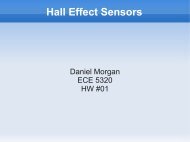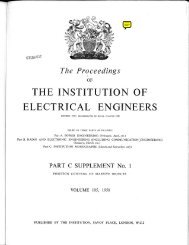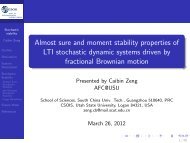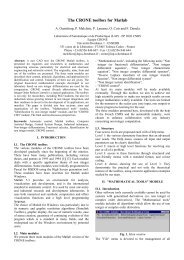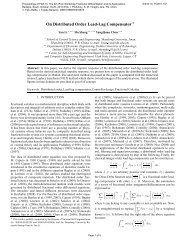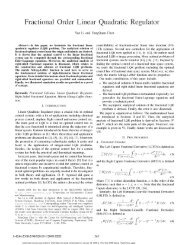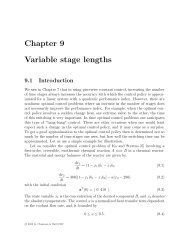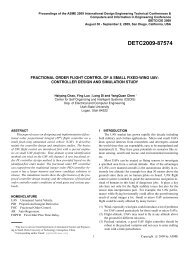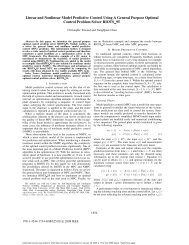Fractional potential field in path planning for mobile robot obstacle ...
Fractional potential field in path planning for mobile robot obstacle ...
Fractional potential field in path planning for mobile robot obstacle ...
Create successful ePaper yourself
Turn your PDF publications into a flip-book with our unique Google optimized e-Paper software.
The objectives are:<br />
• Control the diffusion of the pollution to a conf<strong>in</strong>ed area.<br />
• Neutralize the pollution <strong>in</strong> a time optimal way while not mak<strong>in</strong>g the area overdosed.<br />
• M<strong>in</strong>imize the polluted area that is heavily affected.<br />
n <strong>robot</strong>s will partition Ω <strong>in</strong>to a collection of n polytopes V = {V1, · · · , Vn},<br />
pi ∈ Vi. It can be seen that to control the diffusion process and m<strong>in</strong>imize the<br />
heavily affected area, the <strong>robot</strong>s should be close to those areas with high pollution<br />
concentrations. To decide the positions of the <strong>robot</strong>s, we consider the m<strong>in</strong>imiz<strong>in</strong>g<br />
of the follow<strong>in</strong>g cost function.<br />
K(P, V) =<br />
n<br />
<br />
i=1<br />
Vi<br />
ρ(q)|q − pi| 2 dq <strong>for</strong> q ∈ Ω. (2)<br />
It is clear that to m<strong>in</strong>imize K, the distance |q − pi| should be small when the<br />
pollution concentration ρ(q) is big. A necessary condition <strong>for</strong> K to be m<strong>in</strong>imized<br />
is that {pi, Vi} k i=1 is a Centroidal Voronoi Tessellation of Ω<br />
9 - 15



